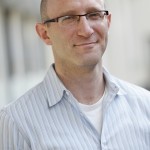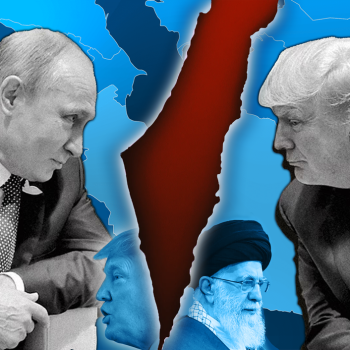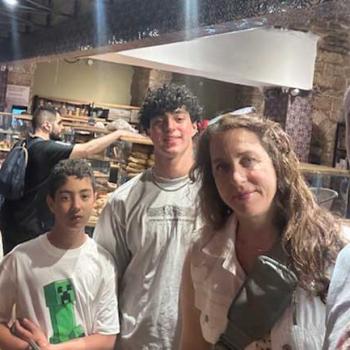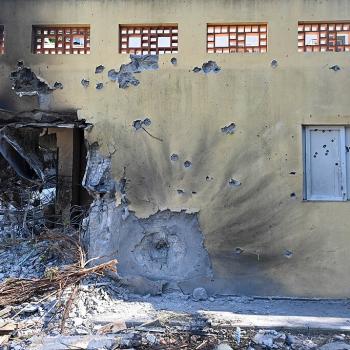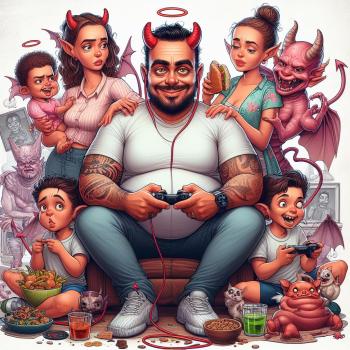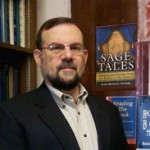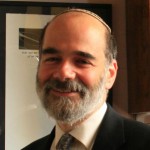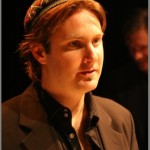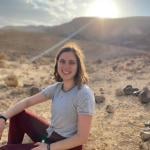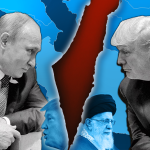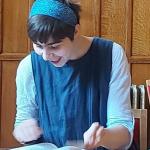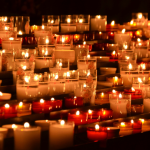By Ariel Evan Mayse and Yossi Quint
The opening of this week’s “parasha” (portion) finds Jacob on his journey home after many years of indentured servitude. He returns in triumph with a new family and great wealth, but coming back to the land of his forebears means that Jacob must confront a shadow from his past. He must finally make amends with his brother Esau, from whom he fled so many years previously.
In preparation for this meeting, Jacob sends messengers bearing gifts before him, perhaps hoping to placate Esau and smooth over the affair of the stolen birthright (see, for example, the Radak’s commentary on Gen. 32:4). Yet Jacob understands that the rift between them is great indeed, and he fears that the confrontation may turn violent.
So he divides his camp into two, hoping that at least one will survive. He forges the Jabbok River with his family and possessions, but for some reason Jacob returns to the other side alone. There in his solitude he wrestles with an unnamed figure until dawn breaks. Jacob is forever changed by this encounter; he carries a limp, and his name is changed to Israel, or “one who struggles with God.”
This rich narrative cries out for interpretation. Why does Jacob retrace his steps? Rashi, quoting the Talmud, famously tells us that Jacob crossed the river once more to retrieve some “little jars” he had forgotten. In Jewish tradition, the Jabbok symbolizes the enigmatic boundary between life and death. The far bank of the river, the locus of Jacob’s struggle, is a liminal frontier shrouded in mystery and fear. But it is also a realm of transition and transformation.
Who is the anonymous being with whom Jacob wrestles? Maimonides, in his “Guide of the Perplexed” (2:42), explains that Jacob’s struggle was only a dream. His confrontation was internal, and he was grappling with things that lay deep within him. This helps us understand Rashi’s statement in a new light. In addition to seeing Esau, his brother of flesh and blood, Jacob’s journey home means that he must revisit parts of himself that had been long forgotten or brushed off as insignificant.
Could this include his complicated relationship with his father, Isaac? And what of his own struggles with faith? Jacob has stood in the divine presence, but he has difficulty trusting the stability and permanence of his relationship with the God of his forefathers. We know that such struggles cannot be forever repressed or sublimated. Jacob couldn’t just abandon these elements; he needed to confront them and bring them along with him, and perhaps it was to redeem these small (or not so small) jars of his past that he recrossed the Jabbok.
The prophet Hosea, whose words some communities read as this week’s haftarah, offers a slightly different picture of Jacob’s struggle: “In the womb he took his brother by the heel, and by his strength he strove with a godlike being” (12:4). It seems that Jacob’s wrestling match by the Jabbok should be understood as an extension of his contest with Esau in the womb, and the person with whom he grappled was some entity both mysterious and divine.
At the end of his struggle, Jacob is told, “You have striven with being divine and human, and have prevailed” (Gen. 32:29). His internal wrestling match was more than a way of coming to terms with his own psychological baggage; it was a struggle with the realization that a divine spark dwells within him.
Jacob’s radical encounter — his moment of the “mysterium tremendum” — leaves him with a new awareness of divine immanence within. This allows him to see God’s presence in the world, and in others, with a newfound clarity. The site of his struggle, the shadowy bank of the Jabbok River, is now called Penni’el — the place where God’s face became visible.
Hosea suggests that Jacob’s struggles are connected. But what does his transformation by the Jabbok have to do with the impending showdown with Esau?
Jacob’s internal wrestling match has changed him, preparing him to meet Esau in a new way. He has tended and healed the long-ignored scars of his past, and can make amends for an altercation from which he fled decades before. Indeed, since Jacob has struggled with the divine element within him and come to recognize that the same spark lives in others, he can greet Esau as a fellow traveler and not an adversary. Jacob is now ready to acknowledge that Esau’s face is also “the face of God” (Gen. 33:10).
The Hasidic masters constantly remind us that the Torah is eternal. Its words are eternally relevant, for otherwise they would never have been written down. The stories of the Torah transpire over and over again in the present, and should not be interpreted as simple narratives describing singular events of yore.
The authors of this essay live in Jerusalem and New York. When reading about the two camps into which Jacob divided his family, our thoughts immediately turned to the relationship between the great Jewish worlds of Israel and the diaspora. The lines of communication between them are more open than ever before, but we remain divided into two very different cultures and societies. It is tempting to think, perhaps grimly, that our physical safety depends on being spread out. Whether the threat is violence or assimilation, at least one community will be safe.
The story of Jacob offers us a very different paradigm. It suggests that the project of the Jewish people is much bigger than either the Zionist movement or the vital, creative tradition of the diaspora. The issues we confront in daily life are different, but our communities are nourished by a common heritage of texts, history, purpose and theological visions.
Moreover, we are united by an awareness that divinity is to be found within, as well as in those around us. Therefore, turning toward the uncertainties of the future must also include a collective return to the other side of the Jabbok to reclaim our shared “small vessels.” That place beyond the binary vision of two isolated camps is the realm in which we wrestle with the same God.
Yossi Quint is an undergraduate student at Princeton University, where he is majoring in religion. Prior to attending Princeton, Yossi spent two years studying Jewish texts in the Old City of Jerusalem. A passionate vegan since the age of twelve, Yossi is on the board of the Shamayim V’Aretz Institute and is the chair of their national retreat.
Ariel Mayse is a doctoral candidate in Jewish Studies at Harvard University, where he is working with Arthur Green and Bernard Septimus. He has been a student of Jewish mysticism for many years, and his dissertation explores the idea of language in the teachings of the Maggid of Mezritch. He teaches Hasidic thought and Jewish theology in Jerusalem, where he lives with his wife and son. His is one of the co-editors of the recent two-volume Speaking Torah: Spiritual Teachings From Around the Maggid’s Table (Jewish Lights, 2013) and editor of the forthcoming From the Depth of the Well: An Anthology of Jewish Mysticism (Paulist Press).
ON Scripture — The Torah is a weekly Jewish scriptural commentary, produced in collaboration with Odyssey Networks and Hebrew College. Thought leaders from the United States and beyond offer their insights into the weekly Torah portion and contemporary social, political, and spiritual life.


